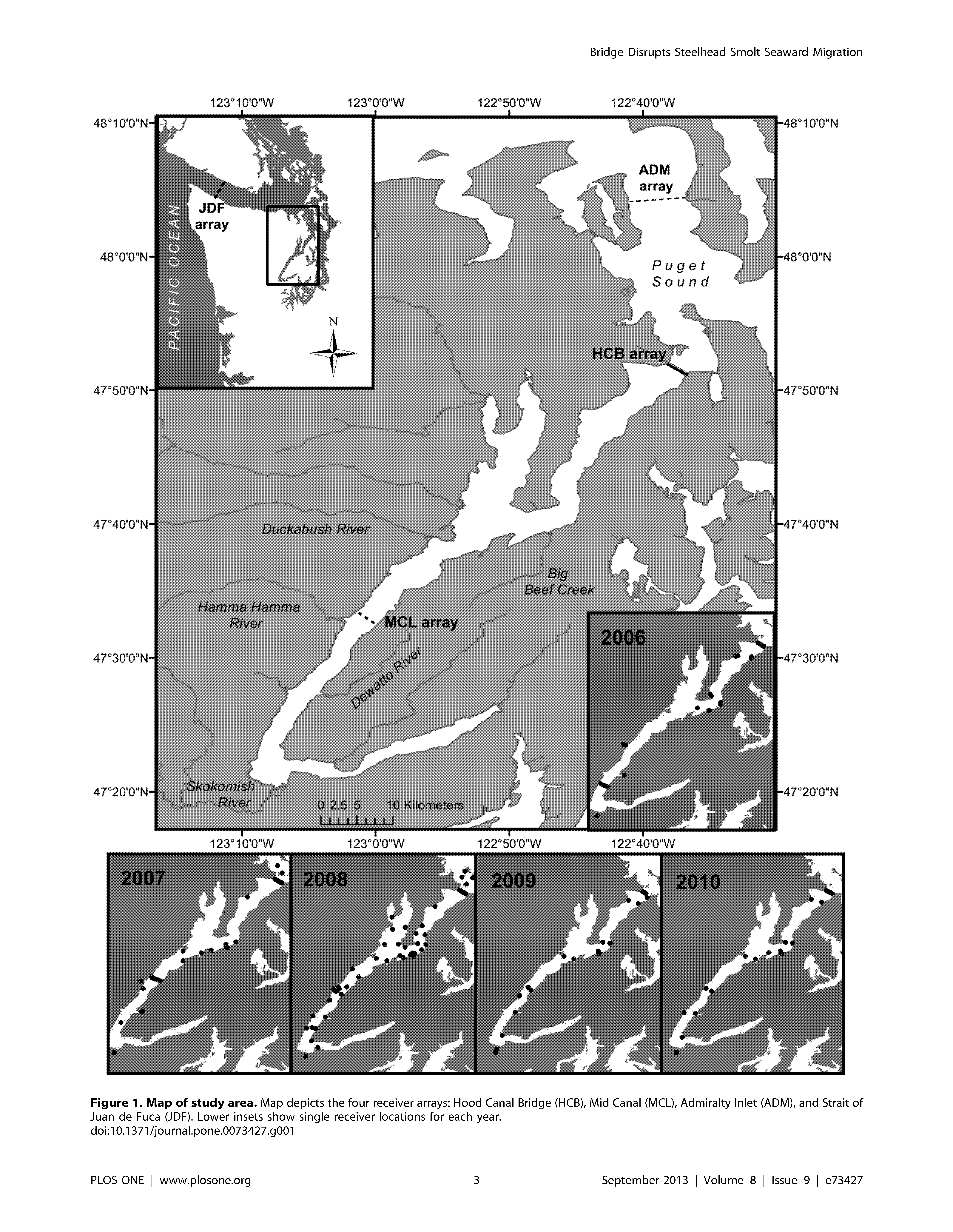Paper: A floating bridge disrupts seaward migration and increases mortality of Steelhead smolts in Hood Canal, Washington State
A new study provides strong evidence of substantial migration interference and increased mortality risk associated with the Hood Canal Bridge for aquatic animals, and may partially explain low early marine survival rates observed in Hood Canal steelhead populations.

Abstract
Background
Habitat modifications resulting from human transportation and power-generation infrastructure (e.g., roads, dams, bridges) can impede movement and alter natural migration patterns of aquatic animal populations, which may negatively affect survival and population viability. Full or partial barriers are especially problematic for migratory species whose life histories hinge on habitat connectivity.
Methodology/Principal Findings
The Hood Canal Bridge, a floating structure spanning the northern outlet of Hood Canal in Puget Sound, Washington, extends 3.6 meters underwater and forms a partial barrier for steelhead migrating from Hood Canal to the Pacific Ocean. We used acoustic telemetry to monitor migration behavior and mortality of steelhead smolts passing four receiver arrays and several single receivers within the Hood Canal, Puget Sound, and Strait of Juan de Fuca. Twenty-seven mortality events were detected within the vicinity of the Hood Canal Bridge, while only one mortality was recorded on the other 325 receivers deployed throughout the study area. Migrating steelhead smolts were detected at the Hood Canal Bridge array with greater frequency, on more receivers, and for longer durations than smolts migrating past three comparably configured arrays. Longer migration times and paths are likely to result in a higher density of smolts near the bridge in relation to other sites along the migration route, possibly inducing an aggregative predator response to steelhead smolts. Conclusions/Significance This study provides strong evidence of substantial migration interference and increased mortality risk associated with the Hood Canal Bridge, and may partially explain low early marine survival rates observed in Hood Canal steelhead populations. Understanding where habitat modifications indirectly increase predation pressures on threatened populations helps inform potential approaches to mitigation.

